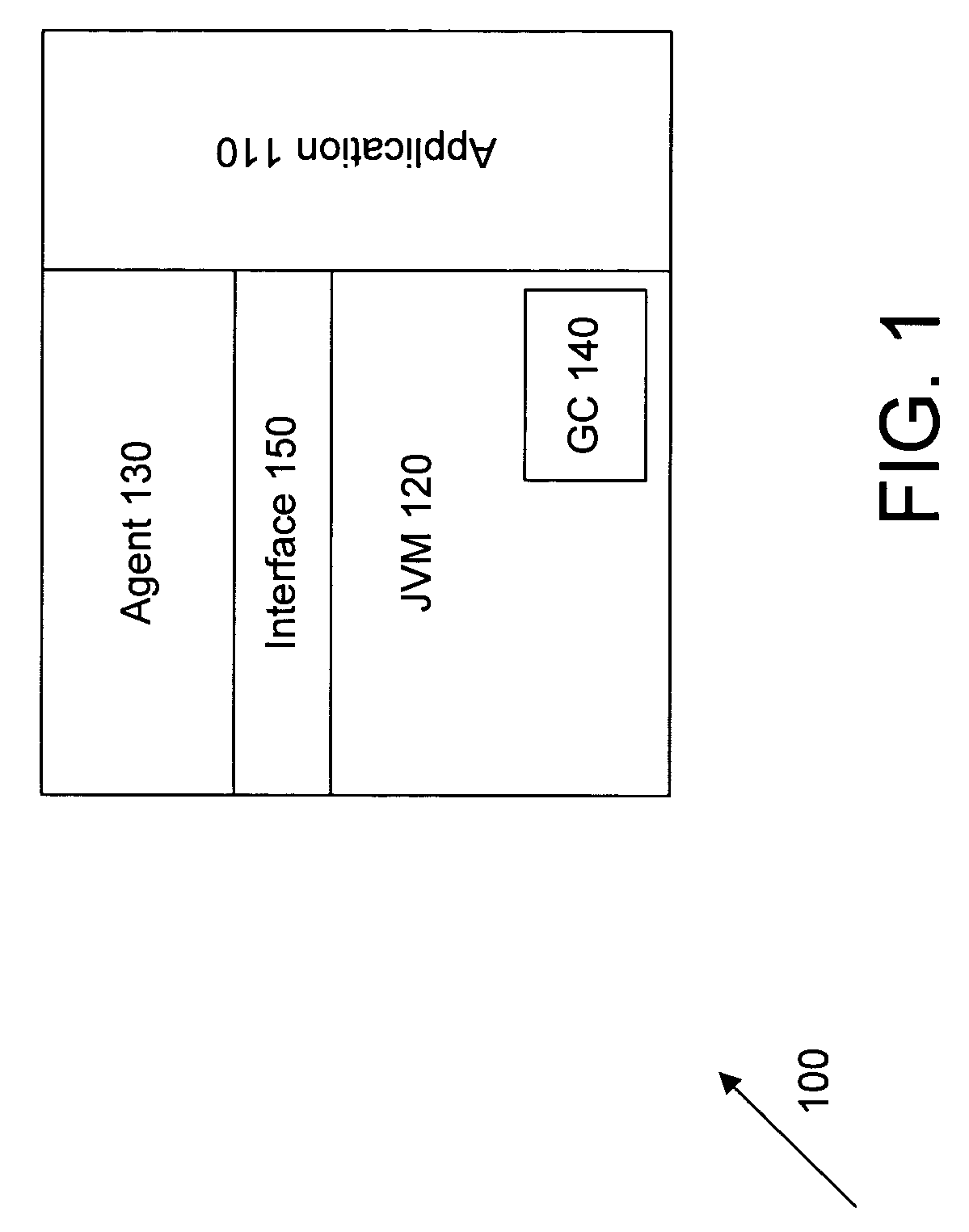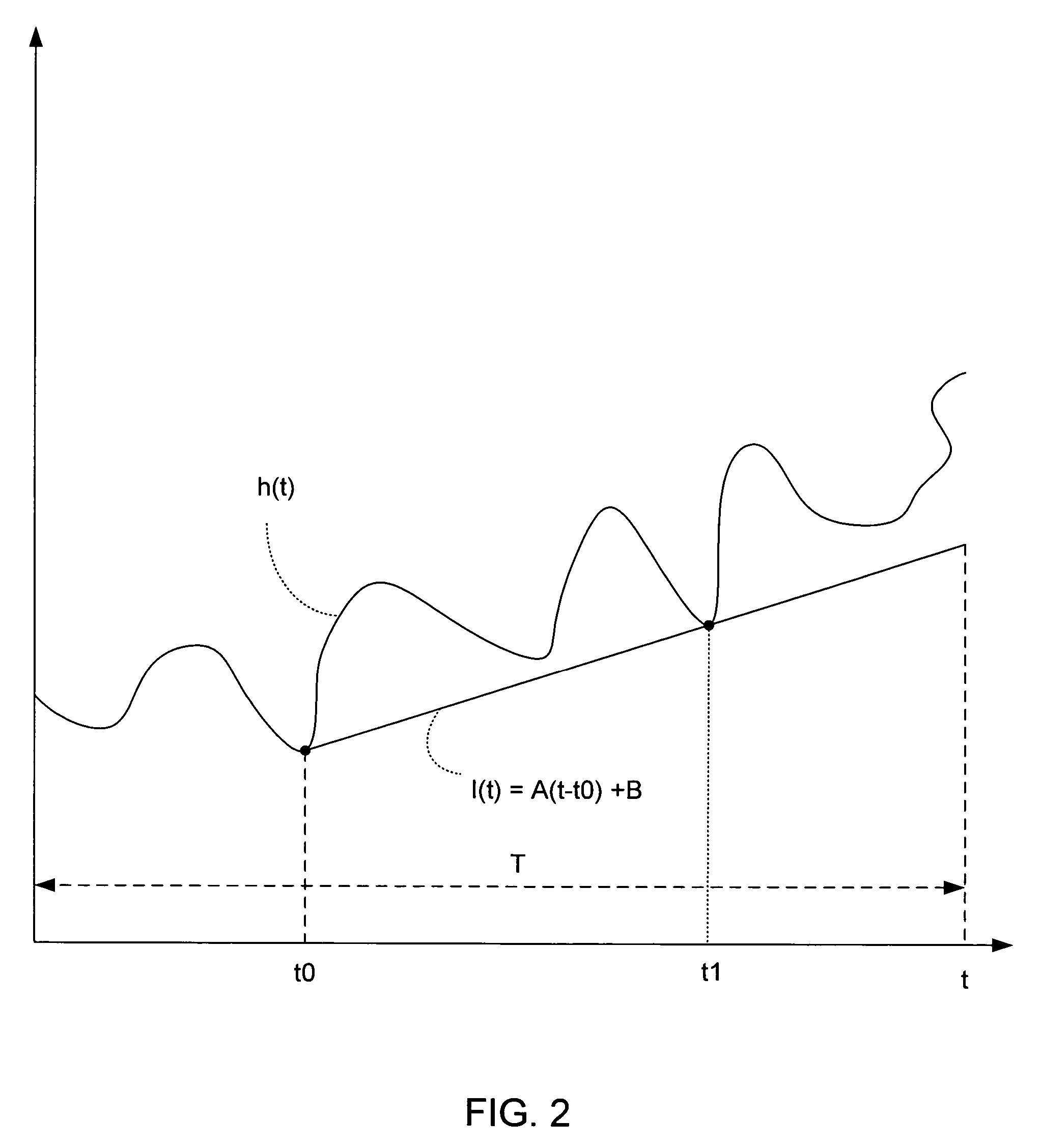Identifying memory leaks in computer systems
a technology of computer system and memory leak, applied in computing, instruments, electric digital data processing, etc., can solve problems such as object waste of memory, java memory leak, and memory leaks that occur frequently in program applications
- Summary
- Abstract
- Description
- Claims
- Application Information
AI Technical Summary
Benefits of technology
Problems solved by technology
Method used
Image
Examples
Embodiment Construction
[0013]In the following description, for the purposes of explanation, numerous specific details are set forth in order to provide a thorough understanding of the present invention. However, it will be apparent to one skilled in the art that the invention may be practiced without these specific details. In other instances, well-known structures and devices are shown in block diagram form in order to avoid obscuring the invention.
[0014]Overview
[0015]FIG. 1 shows an arrangement 100 upon which embodiments of the invention may be implemented. Arrangement 100 includes a JAVA application 110, a JAVA Virtual Machine (JVM) 120, an agent 130, a garbage collector 140, and an interface 150.
[0016]JVM 120, as known in the art, is an execution environment that converts JAVA bytecode of application 110 into machine language and executes it. In the object-oriented paradigm including JAVA, objects are members (or instances) of classes, and these classes are stored in “class” files, which include bytec...
PUM
 Login to View More
Login to View More Abstract
Description
Claims
Application Information
 Login to View More
Login to View More - R&D
- Intellectual Property
- Life Sciences
- Materials
- Tech Scout
- Unparalleled Data Quality
- Higher Quality Content
- 60% Fewer Hallucinations
Browse by: Latest US Patents, China's latest patents, Technical Efficacy Thesaurus, Application Domain, Technology Topic, Popular Technical Reports.
© 2025 PatSnap. All rights reserved.Legal|Privacy policy|Modern Slavery Act Transparency Statement|Sitemap|About US| Contact US: help@patsnap.com



